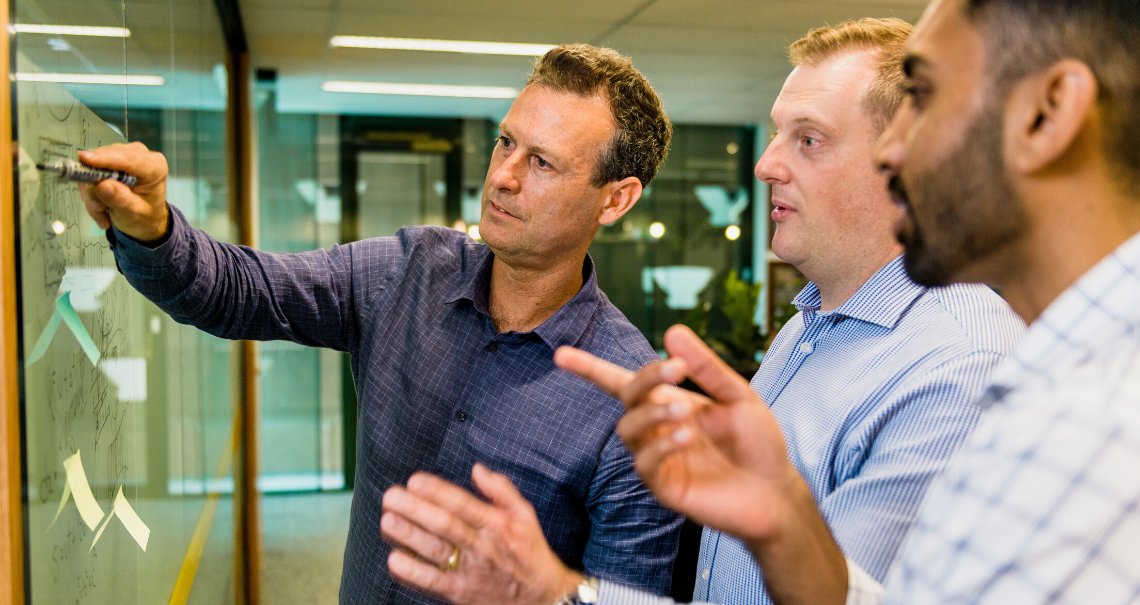DMA Partners believes that every successful project is founded on a strong base of economics, financial forecasting and project structuring.
After 20 years in the property and construction industry, Managing Director Ryan Andersen is still surprised at how many development projects go ahead without the fundamental planning that every project requires.
“One of the keys to delivering a successful project that will perform financially is to make sure that it is the ‘right’ project from the start,” Ryan said.
“Many developments follow what we call a design-led process which involves the design team drawing concepts that are not founded on a strong understanding of the fundamental market drivers and financial requirements of a project.
“This opens clients up to significant development and investment risk.
“Many of the architects and design consultants that we work with agree that this process can be frustrating and takes many iterations to get right.”
As a result, sometimes the ‘right’ project is never achieved and the client decides to stop work after spending too much time and money without a favourable outcome.
“It’s surprising how many developments go ahead on ‘gut feel’ without having undertaken a full analysis in terms of financial viability and market demand.”
To counter this, Ryan firmly believes that a commercially-led approach, as opposed to a design-led approach delivers the financial success and reduced risk that many clients and project teams are looking for.
Ryan added that to give a project the greatest chance of success, there are four major elements essential to planning.
“The first is understanding your market through detailed research,” he said.
“This includes understanding the end user and subsequent demand for tenants or purchasers.
“Once determined, the end sale or operation strategy can be developed to ensure there is a market for the asset or product you are proposing to deliver.
“The old saying ‘build it and they will come’ is just not good enough in this market.”
Ryan confirmed that while it sounds simple there are so many projects that get going without a deep understanding of the market and the key drivers that need to be considered and satisfied.
The second element to success lies with modelling the commercial feasibility needs of the project to understand both the revenue and cost sides of the equation and the forecast profit.
“Understanding a project’s commercial feasibility is a critical tool and provides a window into the health of the project,” Ryan said.
“Every project should have a feasibility in place from the start that will evolve as the project progresses.
“This allows the client and project team to stay focussed on the initial profitability forecasts identified from day one.”
Ryan explained that the third element is the development program.
“People often only think of programming in terms of the detailed construction program that the builder provides as part of a construction contract,” he said.
“However, planning involves deep consideration of the scope and steps within the development process, how they interrelate with each other, and how long they are likely to take.
“Having a development program in place paints a comprehensive picture of how a project will progress, and identifies risk early so it can be managed effectively.”
Ryan concluded that the fourth and last essential element to adopting a successful commercially-led approach is the creation of the project brief.
“The project brief is developed directly from the outputs of the research and feasibility assessments,” he explained.
“Based on solid commercial and market evidence, the brief provides instructions for the design team to work from, not the other way around.
“The outcome is a well-informed design and DA that is delivered efficiently, and for far less cost and frustration for the client and the project team.
Incorporated in 2008, DMA Partners has delivered more than $750 million of projects, and managed over $2 billion of property assets, with a profitable outcome on each and every occasion.
“Our commercially-led approach has yielded great savings and outcomes for our clients,” Ryan said.
“It is fundamentally what differentiates DMA Partners from many of our peers who are traditionally project managers focussing only on the delivery end of projects, rather than the front-end planning.”




